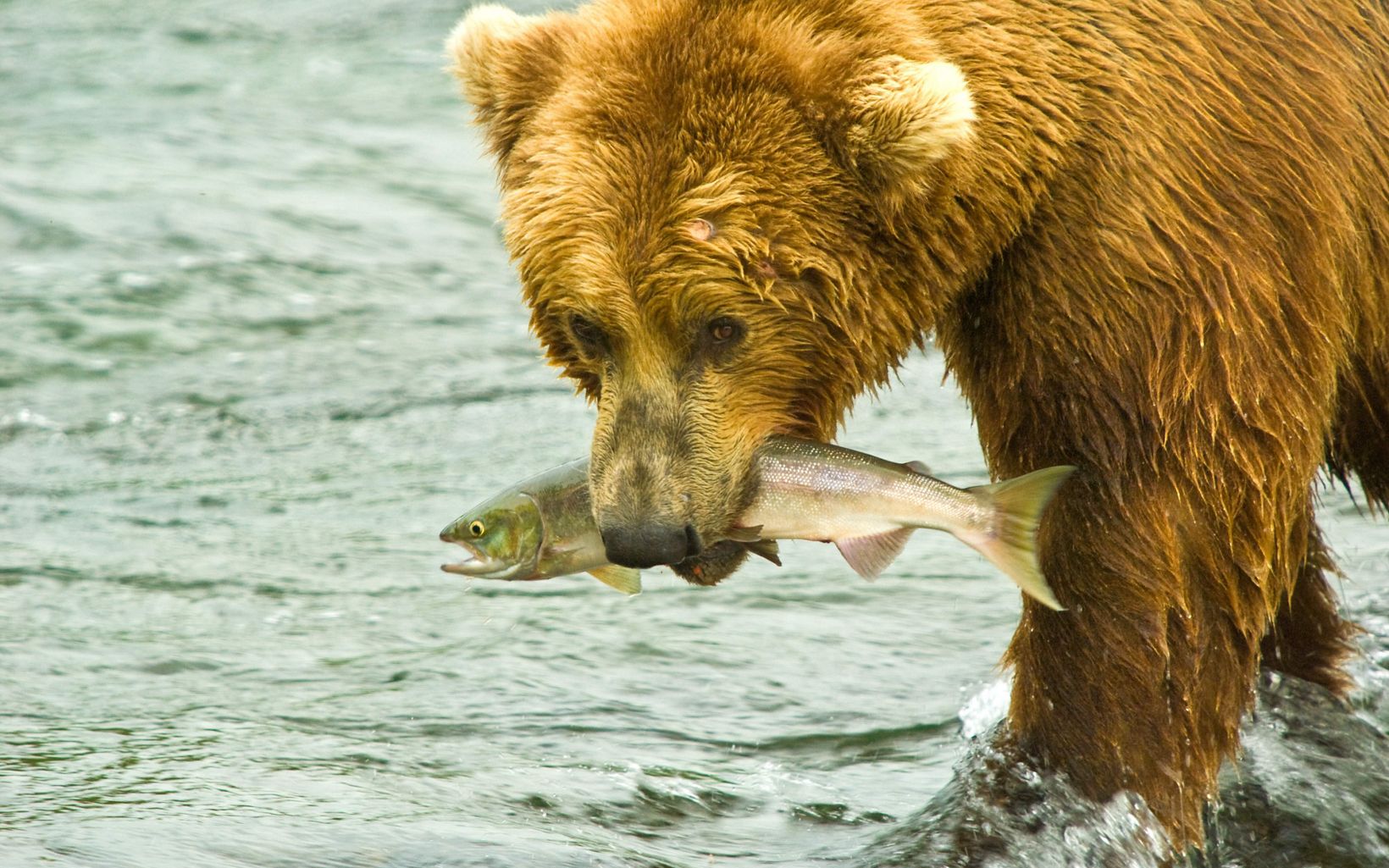Meet the Brown Bear
The brown bear includes many subspecies, including the kodiak and grizzly. Coloration varies by region and individual from a pale fawn to near black. All subspecies are large, males growing over 6 feet in length and 800 pounds, depending on available diet. The northern salmon-feeding populations are by far the largest, with males weighing as much as 1500 pounds. In the United States, the heaviest concentrations of brown bears occur in Alaska, their range in the lower 48 is now reduced to less than 1 percent of its historical scope.
Omnivores, brown bears are important predators and distributors of seeds within their ecosystems. Their diet varies widely by region, ranging from grasses and roots to fish and moose. Brown bears hibernate in the winter, which may range from October to December through March, April or May, depending on location, weather and individual. They stockpile body fat to metabolize during their long winter sleep, and brown bear females typically give birth during hibernation.
Unpredictable and often impulsive, brown bears have been consistently characterized as dangerous. The danger of attack, however, is greatly exaggerated. Brown bears typically avoid human contact whenever possible. Their reputation as livestock predators is also inflated and has led to the persecution of target populations.




Protecting the Brown Bear
Although threatened by habitat loss, global populations are not in immediate danger. The Grizzly bear subspecies is currently listed as Threatened in the continental United States but has been recommended for removal from the list. But, to ensure the species’ continued success, TNC is studying grizzly movements by tagging and tracking bears in the Greater Yellowstone Ecosystem (GYE). There are an estimated 800 to 1,100 grizzly bears in the GYE, which includes Yellowstone National Park and Grand Teton National Park plus portions of Idaho, Montana and Wyoming. About 10 percent of those bears now wear GPS collars and are being monitored by the Conservancy and others.
Discover what it is like to trap, tag and track grizzly bears in the name of science.

